
The Two Guadalupes – Mary and The Crescent Moon
Today is the feast day of our Lady of Guadalupe, Patroness of the Americas. She holds particular significance to the Catholic Church in America, as her appearance to St. Juan Diego on Tepeyac hill in Mexico was the first Marian apparition in the New World. She is dearly beloved by Mexican Catholics, and wherever there is a Mexican community, a statue or picture of her will be found. Another less well-known fact about Our Lady of Guadalupe is that she is connected to the Spanish Reconquista and their ultimate defeat of the centuries-long Islamic invasion of their homeland.
The story begins shortly after Jesus’ death with St. Luke. He was not only a gospel writer, but an artist and craftsman. He painted the first icons, and created the first statues of Jesus and Mary. One of these statues of the Blessed Virgin was eventually brought to Spain three centuries later by St. Leander and enshrined in a church in Spain’s Extremadura province, where it stayed for several additional centuries.
Tariq Ibn Ziyad and the armies of Islam invaded Spain in 711 AD. They embarked on a reign of terror which included not only the complete military conquest of the Iberian peninsula by 718, but the destruction and transformation of many churches into mosques, and the conversion at the point of a sword of many Catholics to Islam. Faithful Catholics — priests, religious, and laity alike — attempted to preserve their sacred places and objects as much as possible from Islam’s destruction. The Church where this ancient statue of Mary was located was destroyed and turned into a mosque along with everything in it.
Everything, that is, except the statue.
It was said that a few Catholics took the statue and hid it in an iron casket in the banks of the nearby Guadiana River, also known as the Wolf River, or in Latin, lupe. However, none could verify the story. The Extremadura province was a hotbed of fighting for centuries between Catholics and Muslims, and when the Muslims controlled the area, they kept the name given by the Spanish but referred to the local river as a wadi, or oasis. Hence, the river and the surrounding area came to be known as wadi lupe, or Guadalupe.
The statue’s story drifted away into history and legend for six centuries. The Extramadura province was re-Christianized during this time, but the statue remained lost. One day around 1326, a shepherd named Gil Cordero from the nearby city of Caceres had a vision of the Blessed Mother while tending to his cattle along the banks of the Guadalupe river. She told him about the statue and where to find it. He went and told the local bishop, who sent a team of priests to dig in the location told to him, where they found her in tact, just as she had said. The rediscovery of the lost statue along with the miracles that accompanied it enlivened the local Catholic community, and a new Church and monastery were constructed at the location.
 Our Lady of Guadalupe, Extremadura
Our Lady of Guadalupe, Extremadura
 Cloister of the Real Monasterio de Santa María de Guadalupe, Spain
Cloister of the Real Monasterio de Santa María de Guadalupe, Spain
At the same time, the Muslim Marinid Empire in Morocco was planning to attempt a major invasion of Spain as had been done in previous centuries to re-invigorate the Andalusian Caliphate and overturn the long, hard-won victories of the Spanish Catholics. Such had already been done twice by Muslims in the past, first with the Almoravids in 1084 and then with the Almohads in 1146. However, this time the Spanish were aware and ready. Portuguese King Alfonso IV and Castilian King Alfonso XI united and in 1340 made pilgrimage to the new Shrine of Our Lady of Guadalupe, entrusting the battle to her. They and the Catholic armies met the forces of Islam at the Salado River in Seville, where after a fierce battle they routed the Muslims and drove them back into Morocco. The Battle of Rio Salado marks the final attempt by Muslims at a massive land invasion of Spain. It would only be a matter of time before the Muslim Kingdom of Granada would fall a century and a half later in 1492. However, the thanks given to Our Lady of Guadalupe for the victory she brought the Catholics was not forgotten.
The reason Bishop Juan de Zumarraga, Mexico’s first bishop and recipient of the tilma of St. Juan Diego gave Our Lady of Guadalupe in Mexico this same title was not a mere coincidence. He began his ecclesiastical life as a Franciscan monk in the monastery at Guadalupe in Extremadura, so he was quite familiar with her story. In the image given on Tepeyac hill, Mary came in a form that is literally taken from the pages of scripture:
And a great portent appeared in heaven, a woman clothed with the sun, with the moon under her feet, and on her head a crown of twelve stars… (Revelation 12:1)
Yet if one looks at the feet of the image of Our Lady imprinted on the tilma, one sees that she is standing upon the crescent moon, which is the symbol of Islam – a symbol that has been carried historically on the flags of many Muslim armies throughout history. To a man like Zumárraga, this would have carried great significance.
 The Tilma Image of Our Lady of Guadalupe, Mexico
The Tilma Image of Our Lady of Guadalupe, Mexico
Our Lady of Guadalupe in Mexico bears a resemblance to another statue, Our Lady of the Almudena. The latter’s story was that her statue was originally brought to Spain by St. James and was housed in a Church in Madrid for centuries until the Islamic conquests. The church was desecrated and turned into a mosque, but faithful Catholics hid the statue under a local granary. Nearly four centuries later when Madrid was reconquered in 1085, the statue was discovered by locals. The mosque was destroyed, the church rebuilt, and the statue restored to its rightful place. Notice that as with Our Lady of Guadalupe in Mexico, Our Lady of the Almudena is likewise standing on the crescent moon of Islam:
 Our Lady of the Almudeña
Our Lady of the Almudeña
Our lady of Guadalupe is the Patroness of the Americas and the Mexican people. However, her very name and image are inseparable from her roots as the woman who exterminated the Islamic serpent beneath her feet in Spain. In Mexico, millions of converts were won for the faith in just a few years, the vicious Aztec plumed serpent-god Quetzalcoatl defeated by the beautiful lady from the heavens. Like those of Islam before it, the cruel excesses of the Aztec religion were no match for the loving power of Our Lady.
That the moon beneath our Lady’s feet has at times taken the shape of the crescent serves as a reminder of her intercessions against Islam, whether at Lepanto, for the Spanish people in conquered Spain, or in this age of Islamic expansion. It continues to serve as a source of hope to those who seek her intercession.
Catholics would be wise to seek her prayerful inspiration when conversing and contending with Muslims today, just as did the Spanish Catholics of ages past.
Originally published on December 12, 2014.
The Two Guadalupes - Mary and The Crescent Moon - OnePeterFive


 LinkBack URL
LinkBack URL About LinkBacks
About LinkBacks

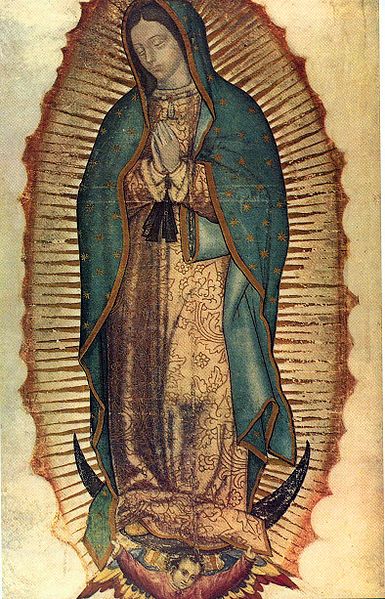
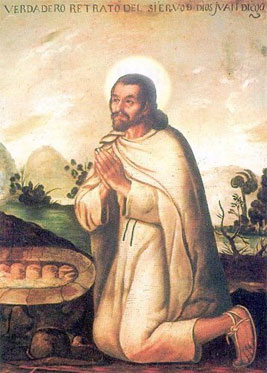
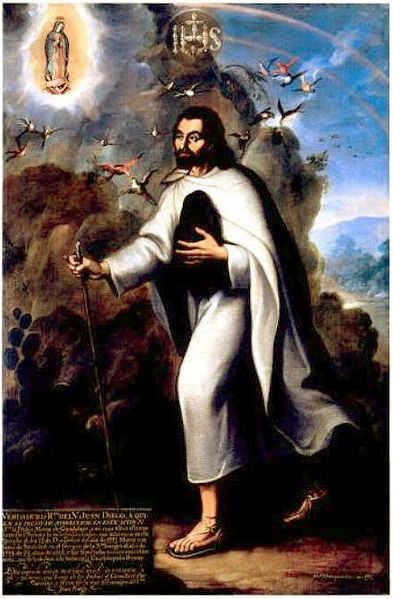
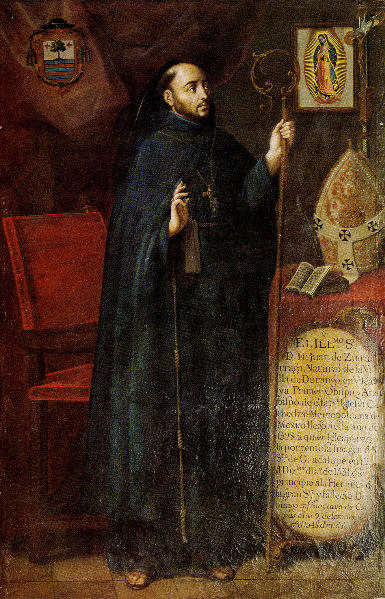




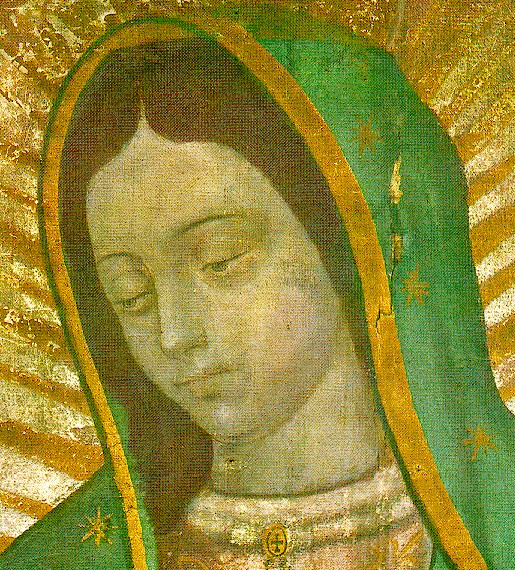
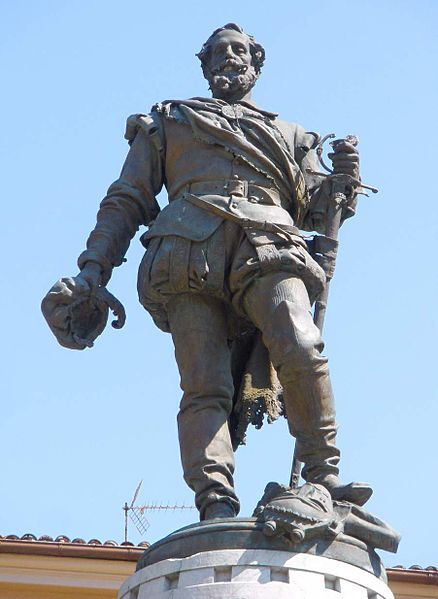
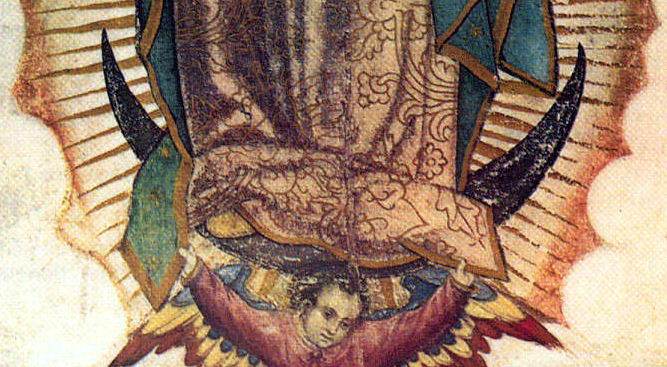
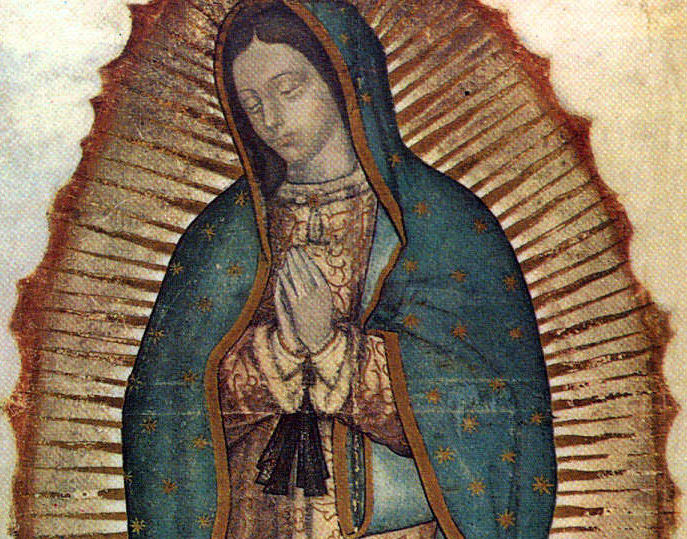

 Citar
Citar
 Our Lady of Guadalupe, Extremadura
Our Lady of Guadalupe, Extremadura
 The Tilma Image of Our Lady of Guadalupe, Mexico
The Tilma Image of Our Lady of Guadalupe, Mexico Our Lady of the Almudeña
Our Lady of the Almudeña
Marcadores